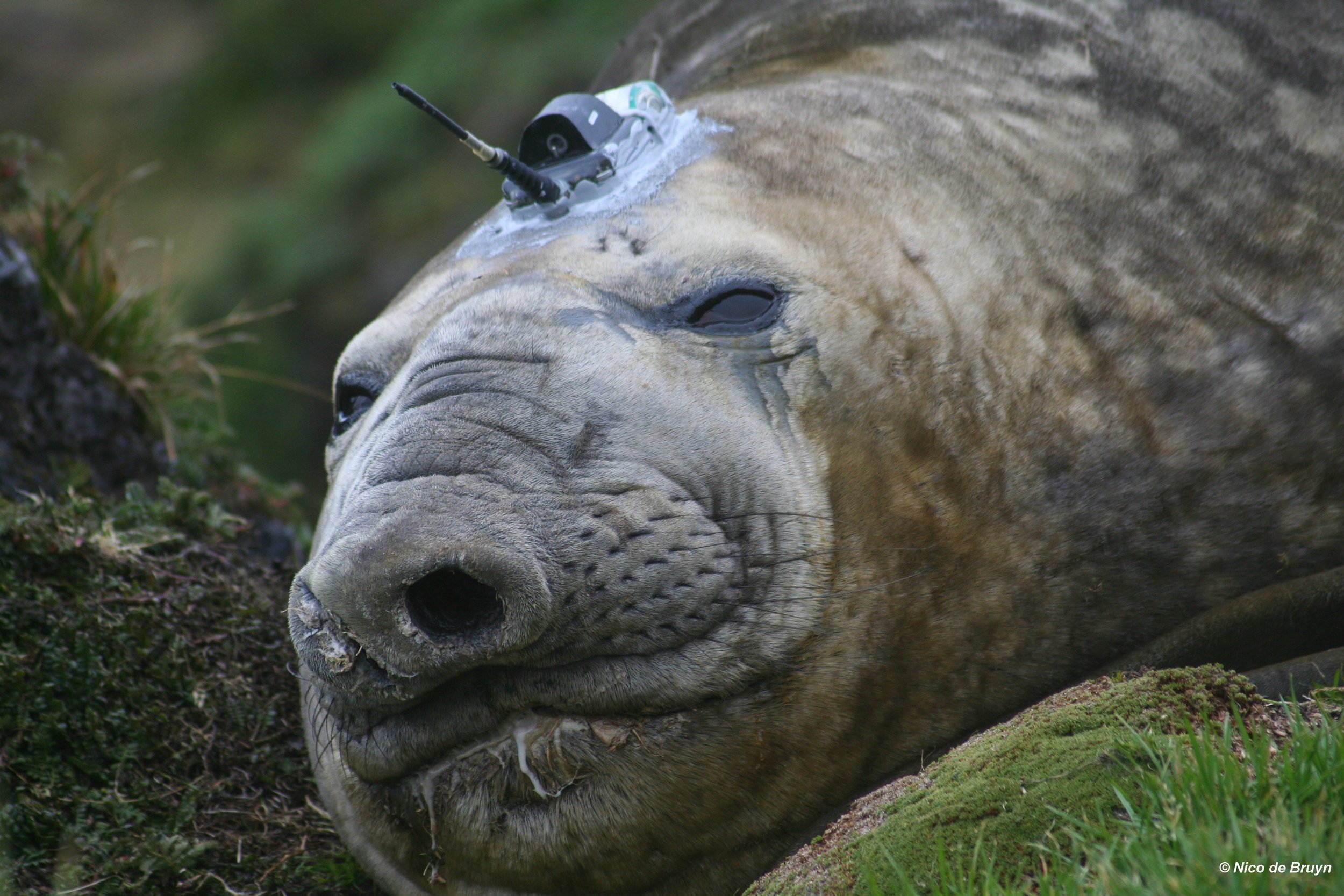Neighbouring seals forage in different places despite similarity of available habitat
/Subantarctic fur seal female at sea off Marion Island. Photo: Nico de Bruyn
A new paper published in BMC Ecology by MIMMP collaborator Dr Mia Wege and colleagues shows that there is no difference in predicted potential and available foraging habitat for neighbouring colonies of Marion Island fur seals and yet these animals from different colonies actually do forage in segregated areas at sea.
Figure 1: A theoretical representation of geographical structuring. The black dots represent the colony locations and the coloured blobs the home-ranges of individuals travelling from the respective colonies.
Several species of central-place foragers, such as seabirds, penguins and seals, have colony-specific foraging areas and forage in different areas at sea compared to conspecifics from neighbouring colonies. Individuals from neighbouring colonies even segregate from each other spatially when they are situated well within each other’s foraging range. This is known as habitat structuring and is the concept shown in Figure 1, where the black dots represent the locations of the colonies, and the coloured blobs are the foraging ranges of individuals from the different colonies.
Figure 2: At-sea locations of 121 female Subantarctic and Antarctic fur seals from Marion Island, 2009-2015 during a) summer and b) winter. The different coloured dots represent the three different colonies.
So why would individuals from one colony rather swim or fly further away from their respective colony than forage in the same area as their neighbours? Currently there are several hypotheses for this, ranging from the costs associated of travel, competitive exclusion by neighbours and even different preferences to environmental drivers by neighbouring colonies used to navigate and find prey resources.
Marine predator foraging movements are, among others, driven by bottom-up oceanographic processes such as sea-surface temperature. If this small-scale segregation by neighbouring colonies of marine central-place foragers are indeed driven by differential preferences or exposure to environmental conditions, then we would expect segregated foraging areas to have different habitat characteristics.
Six-years of tracking data (2009-2015) from one Antarctic and two Subantarctic fur seal colonies at Marion Island showed that different colonies situated around the coastline of the island forage in segregated areas at sea, irrespective of species (Figure 2). Using these two fur seal species as models, we investigated how the habitat characteristics of segregated foraging areas differ between the colonies across seasons. We used remotely sensed environmental variables and tracking data of known foraging locations using machine learning boosted regression trees to model key environmental variables associated with areas of fur seal restricted search behaviour (a proxy for foraging).
We found no differences in the relative influence of key environmental variables to fur seal female foraging habitat between colonies and seasons. Furthermore, the model predicted that the potential foraging areas of females from the three colonies should overlap, and the fact they do not in reality indicates that factors other than environmental are influencing the location of each colony’s foraging area. Small-scale spatial segregation between neighbouring colonies are therefore not dictated by bottom-up processes.




















